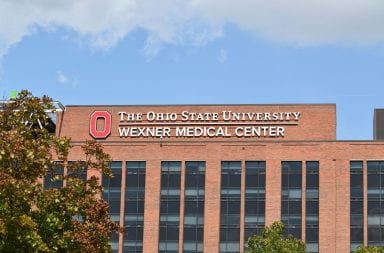The land set aside for the South Campus Gateway Project will be transferred from Campus Partners to the Ohio State Board of Trustees within a few months, said Campus Partners president Terry Foegler.
A summer analysis revealed the Board’s resources would provide the cheapest form of financing for the project, he said.
The university will issue about $42 million in tax exempt bonds, which will be sold to investors to provide funding for the project. Under the bond system, the Gateway center will be given additional time before funds are due to investors so the revenue can continue to build.
“The goal was to find the least expensive way to finance the construction that allowed you to put more money into the quality of the buildings,” said Steve Sterrett, Campus Partners spokesman.
“These are buildings that have substance and are meant to last for decades. It’s expensive to build, so you want to have the least expensive financing,” he said.
The parking structures, office space and graduate housing will be owned by the university, while Campus Partners will continue to manage the retail space.
Foegler said because the transfer is going from one university entity to another, it will not impede the project’s schedule.
“The university had substantial control before and it will have substantial control after,” he said.
After providing funding for both the initial purchase of the land and the operational costs, it was recommended by a bond council that the university actually own the land.
“If we are going to bond the land then we need to own it,” said James L. Nichols, OSU treasurer. “It’s part of a series of steps. These projects are large and complex and they all take many steps to get to the end of the land.”
Funding for the retail portion of the project will come from the $35 million in new market tax credits, which stem from a federal program encouraging development in older, urban neighborhoods, Sterrett said.
“We get an allocation of tax credits and can sell to other investors, and those investors get seven years of tax credits that they can apply to other taxes they owe,” he said.
Before the construction can begin on the project, all the utility work needs to be complete and old property lines need to be revamped, Nichols said.


